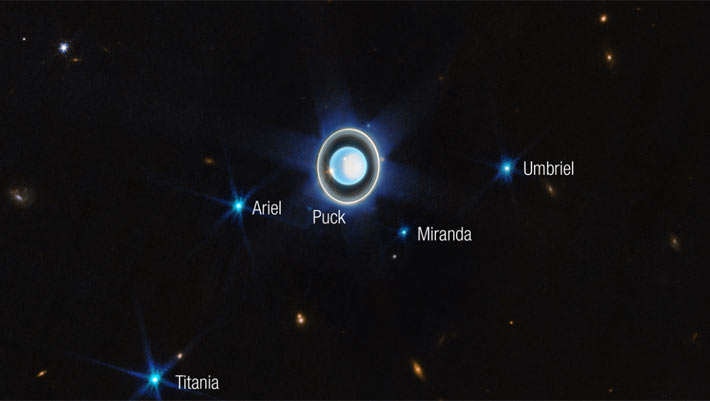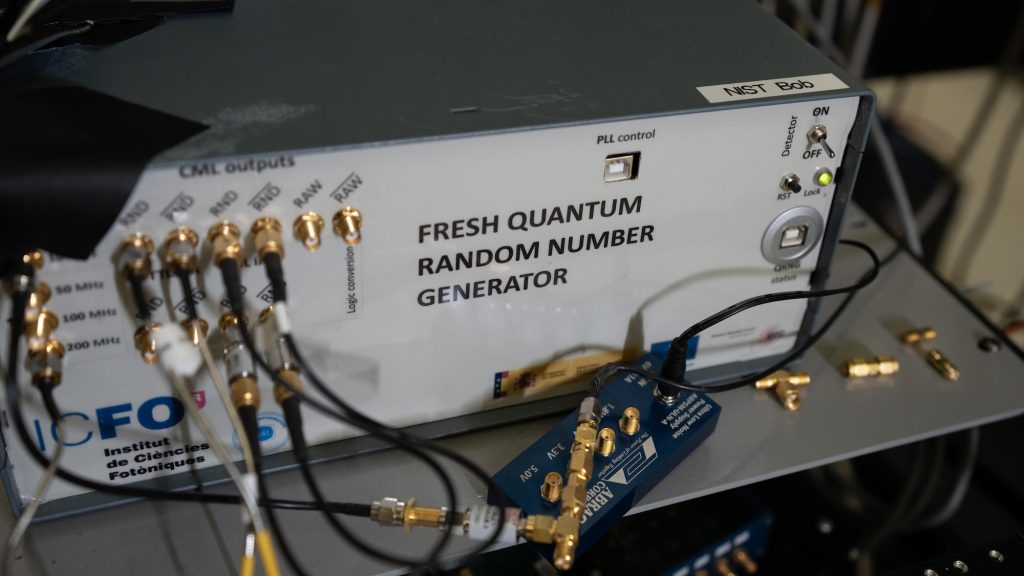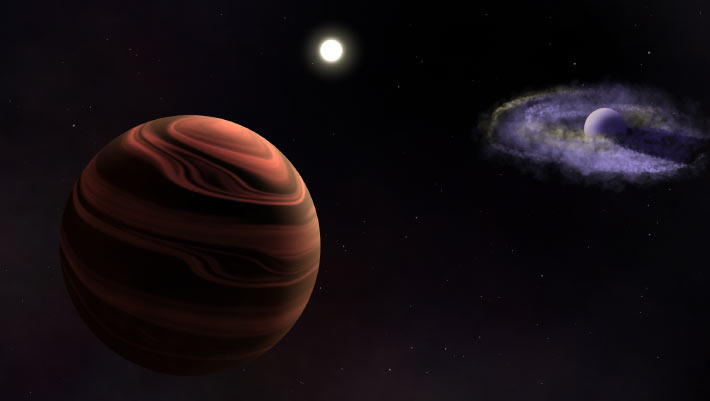In new research, astronomers using the NASA/ESA Hubble Space Telescope searched for signs of interactions between the magnetic environment and the surfaces of Uranus and its four largest moons: Ariel, Umbriel, Titania, and Oberon. They predicted that, based on interactions with Uranus’ magnetosphere, the ‘leading’ sides of these tidally locked moons would be brighter than the ‘trailing’ sides, always facing away. This would be due to radiation darkening of their trailing sides by charged particles such as electrons trapped in Uranus’ magnetosphere. Instead, they found no evidence for darkening on the moons’ trailing sides, and clear evidence for darkening of the leading sides of the outer moons.

This Webb image shows Uranus and six of its 27 known moons (most of which are too small and faint to be seen in this short exposure). Image credit: NASA / ESA / CSA / STScI / J. DePasquale, STScI.
Ariel, Umbriel, Titania, and Oberon are tidally locked to Uranus, so that they always show the same side to the planet.
The side of the moon facing the direction of travel is called the leading hemisphere, while the side that faces backward is called the trailing hemisphere.
The thinking was that charged particles trapped along the magnetic field lines primarily hit each moon’s trailing side, which would darken that hemisphere.
“Uranus is weird, so it’s always been uncertain how much the magnetic field actually interacts with its satellites,” said Dr. Richard Cartwright, a researcher at the Johns Hopkins University’s Applied Physics Laboratory.
“For starters, it is tilted by 98 degrees relative to the ecliptic.”
“This means Uranus is dramatically tipped relative to the orbital plane of the planets. It rolls very slowly around the Sun on its side as it completes its 84-Earth-year orbit.”
“At the time of the Voyager 2 flyby, the magnetosphere of Uranus was tilted by about 59 degrees from the orbital plane of the satellites. So, there’s an additional tilt to the magnetic field.”
Because Uranus and its magnetic field lines rotate faster than its moons orbit the planet, the magnetic field lines constantly sweep past the moons.
If the magnetosphere of Uranus interacts with its moons, charged particles should preferentially hit the surface of the trailing sides.
These charged particles, as well as our galaxy’s cosmic rays, should darken the trailing hemispheres of Ariel, Umbriel, Titania, and Oberon and possibly generate the carbon dioxide detected on these moons.
The astronomers expected that, especially for the inner moons Ariel and Umbriel, the trailing hemispheres would be darker than the leading sides in ultraviolet and visible wavelengths.
But that’s not what they found. Instead, the leading and trailing hemispheres of Ariel and Umbriel are actually very similar in brightness.
However, the researchers did see a difference between the hemispheres of the two outer moons, Titania and Oberon — not the moons they expected.
Even stranger, the difference in brightness was the opposite of what they expected.
The two outer moons have darker and redder leading hemispheres compared with their trailing hemispheres.
The team thinks that dust from some of Uranus’ irregular satellites is coating the leading sides of Titania and Oberon.
Irregular satellites are natural bodies that have large, eccentric, and inclined orbits relative to their parent planet’s equatorial plane.
Micrometeorites are constantly hitting the surfaces of Uranus’ irregular satellites, ejecting small bits of material into orbit around the planet.
Over millions of years, this dusty material moves inward toward Uranus and eventually crosses the orbits of Titania and Oberon.
These outer moons sweep through the dust and pick it up primarily on their leading hemispheres, which face forward.
It’s much like bugs hitting the windshield of your car as you drive down a highway.
This material causes Titania and Oberon to have darker and redder leading hemispheres.
These outer moons effectively shield the inner moons Ariel and Umbriel from the dust, which is why the inner moons’ hemispheres do not show a difference in brightness.
“We see the same thing happening in the Saturn system and probably the Jupiter system as well,” said Dr. Bryan Holler, an astronomer at the Space Telescope Science Institute.
“This is some of the first evidence we’re seeing of a similar material exchange among the Uranian satellites.”
“So that supports a different explanation. That’s dust collection. I didn’t even expect to get into that hypothesis, but you know, data always surprise you,” Dr. Cartwright said.
Based on these findings, the scientists suspect that Uranus’ magnetosphere may be fairly quiescent, or it may be more complicated than previously thought.
Perhaps interactions between Uranus’ moons and magnetosphere are happening, but for some reason, they’re not causing asymmetry in the leading and trailing hemispheres as the authors suspected.
The answer will require further investigation into enigmatic Uranus, its magnetosphere, and its moons.
























